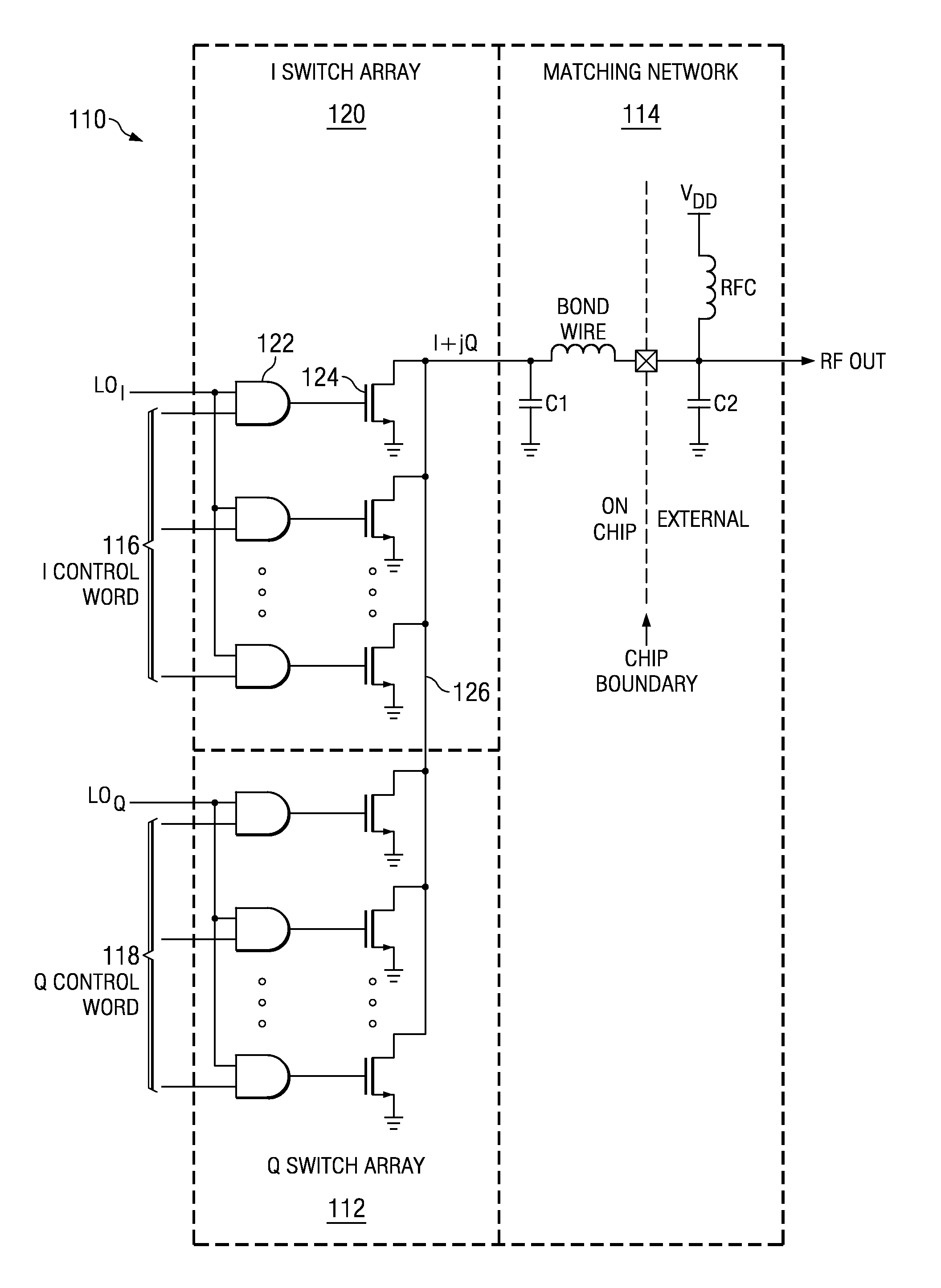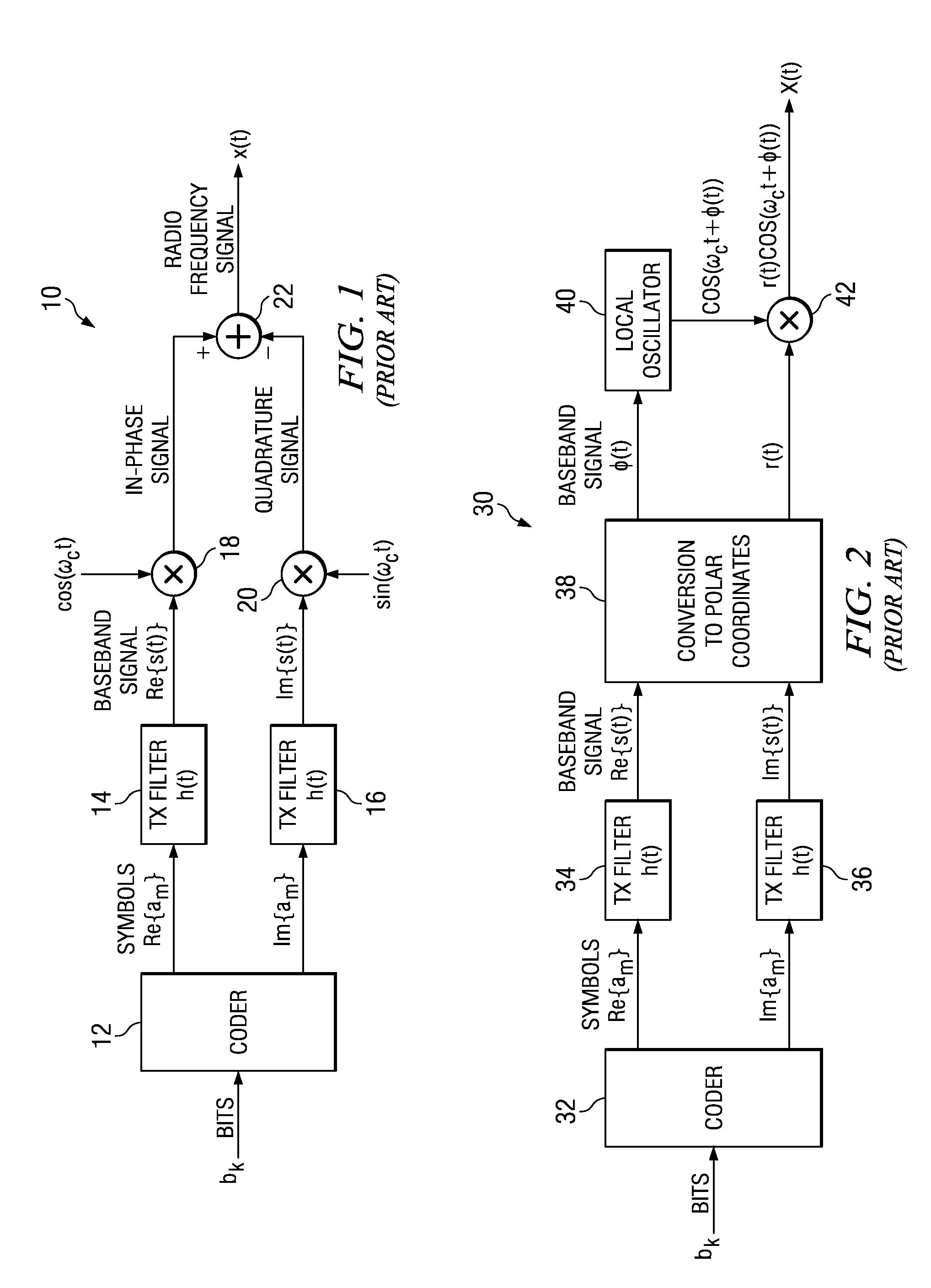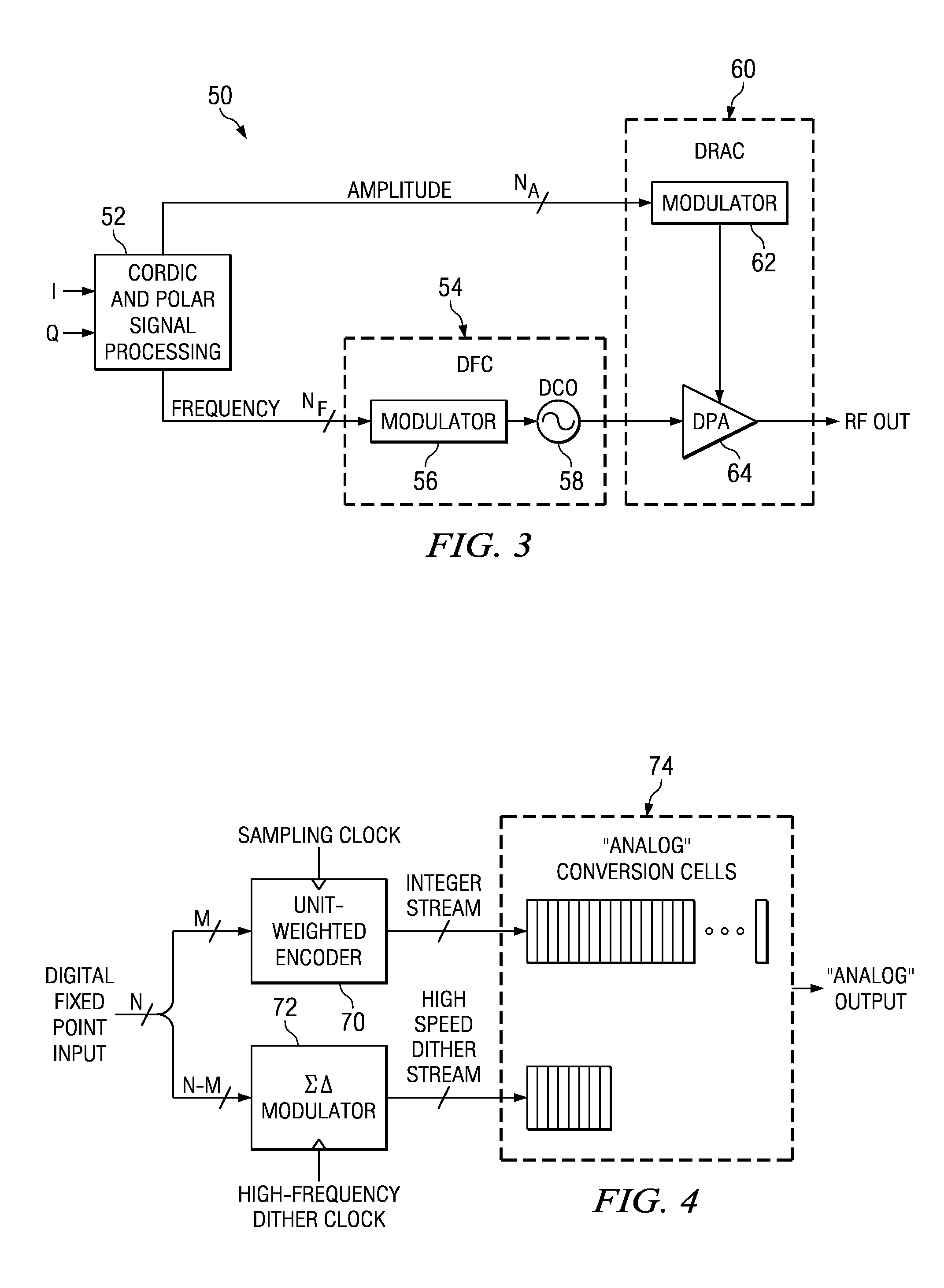Method and apparatus for a fully digital quadrature modulator
a quadrature modulator and fully digital technology, applied in the field of data communication, can solve the problems of not being able to accept the fabrication cost of mask adders for rf/analog circuits, not offering analog extensions, etc., and achieve the effect of maximising the reuse of hardwar
- Summary
- Abstract
- Description
- Claims
- Application Information
AI Technical Summary
Benefits of technology
Problems solved by technology
Method used
Image
Examples
Embodiment Construction
Notation Used Throughout
[0055]The following notation is used throughout this document.
[0056]
TermDefinitionACWAmplitude Control WordADPLLAll Digital Phase Locked LoopAMAmplitude ModulationAPApplication ProcessorASICApplication Specific Integrated CircuitCMOSComplementary Metal Oxide SemiconductorCORDICCOordinate Rotation DIgital ComputerCUControl UnitDACDigital to Analog ConverterDBBDigital BasebandDCDirect CurrentDCODigital Controlled OscillatorDFCDigital to Frequency ConversionDPADigital Power AmplifierDQMDigital Quadrature ModulatorDRACDigital to RF Amplitude ConverterDRPDigital RF Processor or Digital Radio ProcessorDSPDigital Signal ProcessorECLEmitter Coupled LogicEDGEEnhanced Data rates for Global EvolutionFETField Effect TransistorFPGAField Programmable Gate ArrayGPSGlobal Positioning SystemGSMGlobal System for Mobile CommunicationHDLHardware Description LanguageICIntegrated CircuitLANLocal Area NetworkLOLocal OscillatorMOSMetal Oxide SemiconductorMP3MPEG Audio Layer 3MPEGMov...
PUM
 Login to View More
Login to View More Abstract
Description
Claims
Application Information
 Login to View More
Login to View More - R&D
- Intellectual Property
- Life Sciences
- Materials
- Tech Scout
- Unparalleled Data Quality
- Higher Quality Content
- 60% Fewer Hallucinations
Browse by: Latest US Patents, China's latest patents, Technical Efficacy Thesaurus, Application Domain, Technology Topic, Popular Technical Reports.
© 2025 PatSnap. All rights reserved.Legal|Privacy policy|Modern Slavery Act Transparency Statement|Sitemap|About US| Contact US: help@patsnap.com



